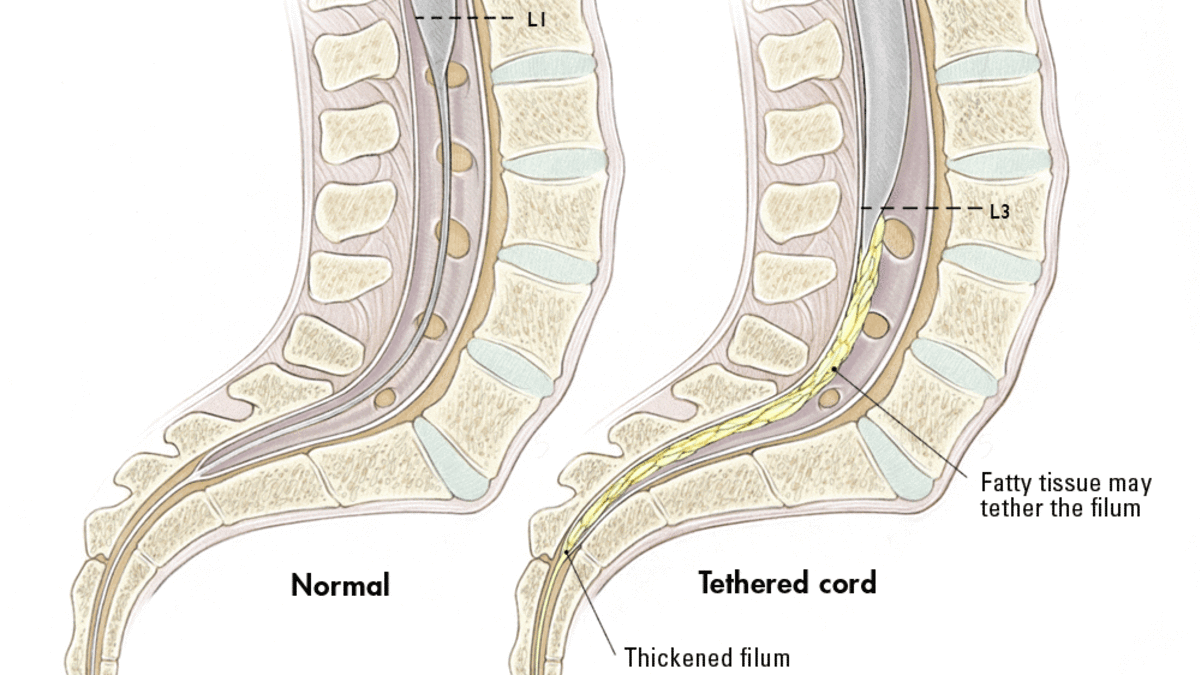
Tethered Cord Syndrome (TCS)
What is Tethered Cord Syndrome (TCS)?
Tethered cord syndrome (TCS) is a disorder of the nervous system caused by tissue that attaches itself to the spinal cord and limits the movement of the spinal cord.
The tissue attachments may be present from birth at the base of the spinal cord (known as the conus medullaris), or they may develop near the site of an injury to the spinal cord. They can cause the spinal cord to stretch abnormally.
The course of the disorder is progressive, which means it gets worse as time goes on.

What are the symptoms of TCS?
In children, symptoms may include:
-
Lesions, hairy patches, dimples, or fatty tumors on the lower back
-
Foot and spinal deformities
-
Weakness in the legs/Gait changes
-
Pain in the lower back/legs
-
Scoliosis
-
Loss of bowel and bladder control
-
Coordination issues
-
Frequent falls/Legs collapse
These delayed symptoms are related to how much strain is placed on the spinal cord over time. The strain can be made worse during sports or pregnancy, or it may be due to the spinal column get narrower (a process known as stenosis) as a person gets older.
What causes TCS?
TCS in children appears to be caused by incorrect growth of the neural tube while the fetus is developing, and it's related to the disorder called spina bifida.
Tethering can also develop after a spinal cord injury. Scar tissue from the injury can block the flow of fluids around the spinal cord. Fluid pressure can then cause cysts to form in the spinal cord, a condition called syringomyelia. This can lead to additional loss of movement, numbness, pain, or other symptoms such as increased heart rate, blood pressure, or problems with breathing.
How is TCS evaluated and treated?
MRI imaging is often used to evaluate people with symptoms of TCS. Doctors can use MRI imaging to diagnose where the tethering is located, whether the base of a patient's spinal cord (the conus medullaris) is lower than normal, or if a tumor or a fatty mass (known as a lipoma) is causing the symptoms of TCS.
In children with TCS, early surgery is usually recommended to prevent further neurological deterioration. If surgery is not advisable, spinal cord nerve roots may be cut to relieve pain.
In adults, surgery to free (detether) the spinal cord can reduce the size and further development of cysts in the cord. Surgery may also restore some function or alleviate other symptoms.
For both children and adults, other forms of treatment can help relieve the symptoms of TCS.